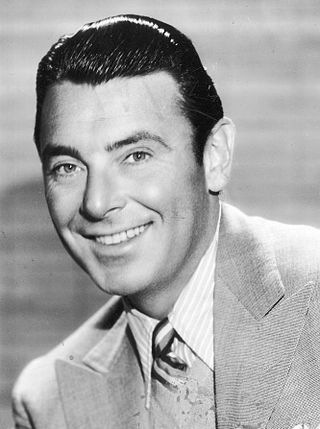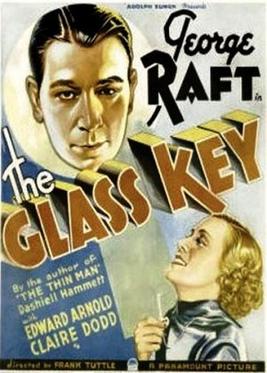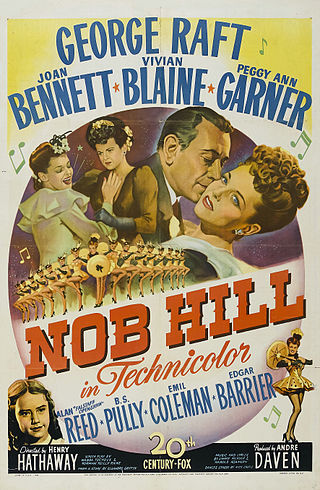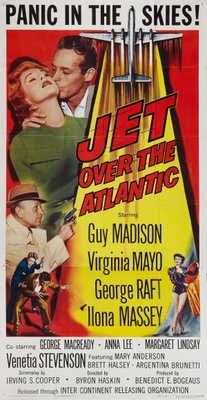
Rose Joan Blondell was an American actress who performed in film and television for 50 years.

Clara Lou "Ann" Sheridan was an American actress and singer. She is best known for her roles in the films San Quentin (1937) with Humphrey Bogart, Angels with Dirty Faces (1938) with James Cagney and Bogart, They Drive by Night (1940) with George Raft and Bogart, City for Conquest (1940) with Cagney and Elia Kazan, The Man Who Came to Dinner (1942) with Bette Davis, Kings Row (1942) with Ronald Reagan, Nora Prentiss (1947), and I Was a Male War Bride (1949) with Cary Grant.

George Raft was an American film actor and dancer identified with portrayals of gangsters in crime melodramas of the 1930s and 1940s. A stylish leading man in dozens of movies, Raft is remembered for his gangster roles in Quick Millions (1931) with Spencer Tracy, Scarface (1932) with Paul Muni, Each Dawn I Die (1939) with James Cagney, Invisible Stripes (1939) with Humphrey Bogart, and Billy Wilder's comedy Some Like It Hot (1959) with Marilyn Monroe and Jack Lemmon; and as a dancer in Bolero (1934) with Carole Lombard and a truck driver in They Drive by Night (1940) with Ann Sheridan, Ida Lupino and Bogart.

George Brent was an Irish-American stage, film, and television actor. He is best remembered for the eleven films he made with Bette Davis, which included Jezebel and Dark Victory.

John Howard Payne was an American film actor who is mainly remembered from film noir crime stories and 20th Century Fox musical films, and for his leading roles in Miracle on 34th Street and the NBC Western television series The Restless Gun.

Joseph Herman Pasternak was a Hungarian-American film producer in Hollywood. Pasternak spent the Hollywood "Golden Age" of musicals at Metro-Goldwyn-Mayer, producing many successful musicals with female singing stars like Deanna Durbin, Kathryn Grayson and Jane Powell, as well as swimmer/bathing beauty Esther Williams' films. He produced Judy Garland's final MGM film, Summer Stock, which was released in 1950, and some of Gene Kelly’s early breakthrough roles. Pasternak worked in the film industry for 45 years, from the later silent era until shortly past the end of the classical Hollywood cinema in the early 1960s.

Nocturne is a 1946 American film noir directed by Edwin L. Marin and starring George Raft, Lynn Bari and Virginia Huston. The film was produced by longtime Alfred Hitchcock associate Joan Harrison, scripted by Jonathan Latimer, and released by RKO Pictures. It was one of several medium budget thrillers Raft made in the late 1940s.

Red Light is a 1949 American film noir crime film directed and produced by Roy Del Ruth, starring George Raft and Virginia Mayo, and based on the story "This Guy Gideon" by Don "Red" Barry, featuring strong religious overtones.

Jean Ann Ewers, known professionally as Eve Brent and Jean Lewis, was an American actress who portrayed Jane in Tarzan's Fight for Life.

The Glass Key, released in 1935, was based upon the 1931 suspense novel The Glass Key by Dashiell Hammett, directed by Frank Tuttle, starring George Raft and featuring Edward Arnold, Claire Dodd, Guinn "Big Boy" Williams and Ray Milland. Ann Sheridan has a brief speaking role as Raft's character's nurse in their first film together.

Goodbye Again is a 1933 pre-Code romantic comedy film made by First National Pictures and Warner Bros.

Follow the Boys also known as Three Cheers for the Boys is a 1944 musical film made by Universal Pictures during World War II as an all-star cast morale booster to entertain the troops abroad and the civilians at home. The film was directed by A. Edward "Eddie" Sutherland and produced by Charles K. Feldman. The movie stars George Raft and Vera Zorina and features Grace McDonald, Charles Grapewin, Regis Toomey and George Macready. At one point in the film, Orson Welles saws Marlene Dietrich in half during a magic show. W.C. Fields, in his first movie since 1941, performs a classic pool-playing presentation he first developed in vaudeville four decades earlier in 1903.

Mr. Ace is a 1946 American film noir starring George Raft and Sylvia Sidney involving a society woman who taps a gangster for his political support as she runs for Congress. The movie was written by Fred F. Finkelhoffe, directed by Edwin L. Marin, and photographed by legendary cinematographer Karl Struss.

Rumba is a 1935 American musical drama film starring George Raft as a Cuban dancer and Carole Lombard as a Manhattan socialite. The movie was directed by Marion Gering and is considered an unsuccessful follow-up to Raft and Lombard's smash hit Bolero the previous year.

Nob Hill is a 1945 Technicolor film about a Barbary Coast, San Francisco, United States saloon keeper, starring George Raft and Joan Bennett. Part musical and part drama, the movie was directed by Henry Hathaway. It remains one of Raft's lesser known movies even though it was a big success, in part because it was a musical.

Edwin L. Marin was an American film director who directed 58 films between 1932 and 1951, working with Randolph Scott, Anna May Wong, John Wayne, Peter Lorre, George Raft, Bela Lugosi, Judy Garland, Eddie Cantor, and Hoagy Carmichael, among many others.

Benedict Bogeaus, was an independent film producer and former owner of General Service Studios.

Black Widow is a 1954 American DeLuxe Color mystery film in CinemaScope, with elements of film noir, written, produced, and directed by Nunnally Johnson, based on the 1952 novel of the same name by Patrick Quentin. The film stars Ginger Rogers, Van Heflin, Gene Tierney, and George Raft.

Jet Over the Atlantic is a 1959 drama film directed by Byron Haskin and stars Guy Madison, Virginia Mayo, George Raft and Ilona Massey. The film's title was misleading as the airliner was a Bristol Britannia turboprop-engined, not "pure" jet-powered aircraft. George Raft's biographer Everett Aaker called Jet Over the Atlantic "a precursor of the disaster genre."

Loan Shark is a 1952 American crime film noir directed by Seymour Friedman and starring George Raft, Dorothy Hart and Paul Stewart.




















